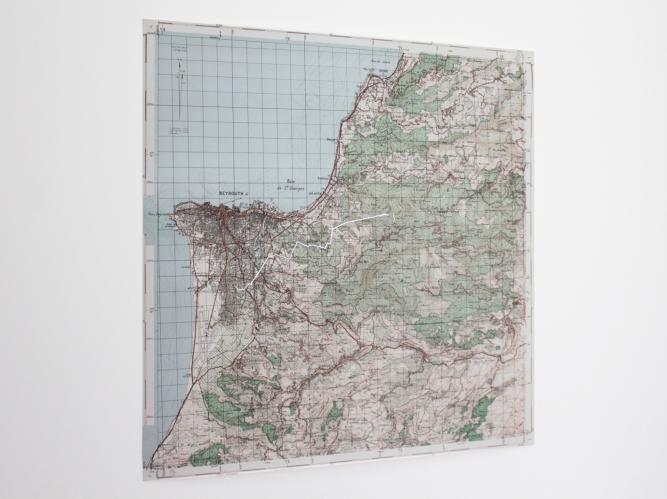memory material
.
MEMORY MATERIAL
TEXT BY NAT MULLER, CURATOR OF THE EXHIBITION MEMORY MATERIAL, AKINCI GALLERY, AMSTERDAM, 2014 (EXCERPT FROM "THE MEMORY MATERIAL OF
JANANNE AL-ANI AND STÉPHANIE SAADÉ").
Beirut-based artist Stéphanie Saadé was born in Lebanon in 1983 in the midst of Lebanon’s Civil War (1975-1990). Like many artists of her generation
and the generation preceding her, a pre-occupation with memory, individual and collective experience of history and place is central. What sets Saadé
apart is that unlike many of her peers and her more senior colleagues, she does not deal with the topic of the civil war in a direct way.
Saadé’s work is not about the politics of visual representation after disaster or about a coming to terms with the aftermath of the civil war, a recurring
theme in much of contemporary Lebanese art. Saadé subtly explores issues of memory, violence, displacement, scarring, reparation and resilience
through the materials and objects she finds and then copies or (re)constructs.
For example, in Scarred Object (2013) she cuts a metal bar into equal parts that she then welds back together again. The bar never goes back to its
original shape and its “scars” after reparation always remain visible. In other words, the violence done to the object always shows, no matter the effort
made to repair it. It is a poignant metaphor for Lebanon’s divided society.
For Strange Parts (2013) she cut discarded everyday objects like chairs, bicycles and tables into pieces that show off the welded joints of the original.
The joints simultaneously form a point of weakness – the object might fall apart - and one of strength – it is here where the two, originally separate, parts
are bound to each other.
In other projects Saadé explores the residual qualities of memory, whether this is lodged in the material she uses or based on her own personal
experience. In Logic Remains (2013), premiering at Akinci Gallery, the artist recuperates forgotten and discarded everyday materials such as pieces of
string, cables, knots, and adhesive tape. Their origin and purpose are lost, but not the process and logic of how they were made. Saadé reproduces
these leftovers, copying their shapes, and exhibits them next to the original.
Together they form delicate examples of artistry.
For the project Underlines (2013) she reproduces a book she read and has underlined passages in, but erases all the text and just keeps the page
numbers and her own marks. Here the prior existence of text is suggested, yet the content of the book is irrelevant.
What remains are the abstract drawings that trace the reading process of the artist.
In Nostalgic Geography (2013) the artist transposes the route of a familiar trip she used to take from her former apartment in Paris, onto an old city map
of Beirut. The point of departure on the Beirut map is her current apartment in the city. Made to scale, the Parisian path is an impossibility in Beirut as it
is interrupted by a river, buildings, and the absence of roads. The displacement of the route reflects her own displacement as a Beiruti exile in Paris but
also renders routines undertaken in her place of exile strange in her own country.

Stéphanie Saadé, Nostalgic Geography, 2013, printed map, mirror stainless steel track, 83x83cm.